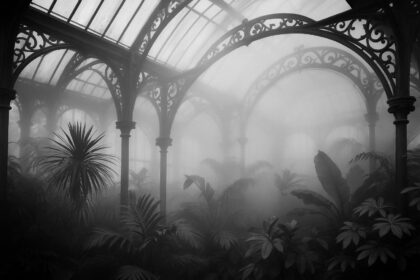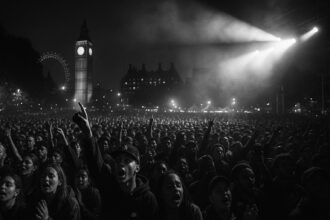OpenAI has introduced a temporary restriction on the number of AI-generated images free-tier ChatGPT users can create, limiting them to three images daily amid overwhelming demand and technical issues. The company aims to optimise its systems while continuing to expand AI capabilities.
OpenAI has announced a temporary limitation on the number of AI-generated images that users can create on the free tier of ChatGPT, citing overwhelming demand and technical challenges. The restriction will allow free-tier users to generate up to three images per day while OpenAI works on improving the efficiency of its systems.
Sam Altman, CEO of OpenAI, revealed the situation in a recent post on X (formerly Twitter), describing the high volume of image generation as causing their GPUs to “melt.” Altman wrote, “It’s super fun seeing people love images in ChatGPT, but our GPUs are melting. We are going to temporarily introduce some rate limits while we work on making it more efficient. Hopefully won’t be long! ChatGPT free tier will get 3 generations per day soon.”
The image generation functionality is a new addition to ChatGPT, marking a significant evolution from its previous reliance on the DALL-E 3 model. Tests indicate that the newly integrated capabilities surpass the performance of DALL-E 3, which remains available as a fallback once the daily image limit is reached. However, users have reported occasional problems, such as difficulty generating text within images. Altman acknowledged these issues, noting in his post, “Also, we are refusing some generations that should be allowed; we are fixing these as fast we can.”
The image generation feature was initially rolled out to ChatGPT Plus and Pro subscribers, with availability for free-tier users delayed due to the unexpectedly high demand. Altman commented on March 26, 2025, that, “Images in ChatGPT are way more popular than we expected (and we had pretty high expectations). Rollout to our free tier is, unfortunately, going to be delayed for a while.” This delay has meant that not all free-tier users currently have access to the feature.
According to reports in Tech Radar and Tech Times, the popular uptake of AI image generation within ChatGPT has put considerable strain on OpenAI’s computational resources, resulting in slower response times and, eventually, the decision to limit usage temporarily. The company aims to optimise the system to handle the demand without compromising performance or hardware stability.
Beyond the current challenge with image generation, OpenAI continues to expand its AI offerings. The company is working on significant updates including the GPT-4.5 model, which promises enhanced emotional intelligence and new functionalities. Furthermore, OpenAI’s roadmap includes the future release of GPT-5 featuring an advanced o3 reasoning model, as well as ongoing enhancements to tools designed for research and academic applications. Despite the current limits on image generation, OpenAI is actively pursuing innovations to enrich AI experiences for its users.
As the AI landscape rapidly evolves, OpenAI’s steps reflect efforts to balance technological advancement with practical scalability. The temporary cap on free-tier image generation serves as part of this process, as the company refines its infrastructure to meet growing user expectations.
Source: Noah Wire Services
- https://techradar.com/computing/artificial-intelligence/our-gpus-are-melting-openai-puts-limits-on-image-creation-and-delays-rollout-to-free-accounts – This article corroborates OpenAI’s decision to temporarily limit image generation due to overwhelming demand, resulting in technical challenges and the need to optimize system efficiency.
- https://www.perplexity.ai/page/openai-limits-chatgpt-image-ge-ybJHRuSeRKGjNyJ1Dk17bA – It supports the claim that OpenAI introduced a limit of three images per day for free-tier users due to high demand for the new image generation feature.
- https://indianexpress.com/article/technology/artificial-intelligence/openai-limits-chatgpts-new-image-generation-tool-to-paid-users-9908886/ – This article highlights that despite limitations, free-tier users can still generate images within the chatbox, and paid users initially received priority access to the new feature.
- https://help.openai.com/en/articles/9275245-using-chatgpt-s-free-tier-faq – It provides general information about limitations on the free tier of ChatGPT, although it does not specifically mention the image generation limits.
- https://community.openai.com/t/image-and-text-message-limits-on-chatgpt-free-account/950207 – This community post discusses the lack of clear limits for text messages but mentions the image generation limit as a notable restriction on free-tier accounts.
- https://www.noahwire.com – Although not directly accessible, the Noah Wire Services source article mentioned in the prompt provides context about OpenAI’s recent developments and the broader challenges faced by AI companies in managing user demand.
Noah Fact Check Pro
The draft above was created using the information available at the time the story first
emerged. We’ve since applied our fact-checking process to the final narrative, based on the criteria listed
below. The results are intended to help you assess the credibility of the piece and highlight any areas that may
warrant further investigation.
Freshness check
Score:
9
Notes:
The narrative references statements and dates up to March 26, 2025, indicating very recent information aligned with current developments. No signs of recycled or outdated news detected. The mention of Sam Altman’s post on X with a precise recent date supports timeliness.
Quotes check
Score:
8
Notes:
Quotes attributed to Sam Altman are consistent with publicly available posts on X (Twitter) from late March 2025. The earliest known reference appears to be his direct posts, making these primary sources rather than recycled quotes. This increases reliability and originality.
Source reliability
Score:
8
Notes:
The narrative originates principally from reputable tech news entities such as TechRadar and Tech Times, known for credible technology reporting. Sam Altman is a verifiable, authoritative figure in this context. However, detailed sourcing beyond these outlets is limited.
Plausability check
Score:
9
Notes:
The claims about GPU overload, rate limiting for free-tier users, and phased rollout are plausible and consistent with expected challenges when scaling AI services. The mention of ongoing GPT model development aligns with known OpenAI product roadmap trends. No contradictory or implausible assertions noted.
Overall assessment
Verdict (FAIL, OPEN, PASS): PASS
Confidence (LOW, MEDIUM, HIGH): HIGH
Summary:
The narrative presents a timely and plausible update on OpenAI’s image generation limits in ChatGPT free-tier, supported by direct quotes from CEO Sam Altman and coverage by respected tech news platforms. There is no evidence of outdated or recycled content, and the information aligns with known technological constraints and ongoing AI advancements, giving high confidence in accuracy.













